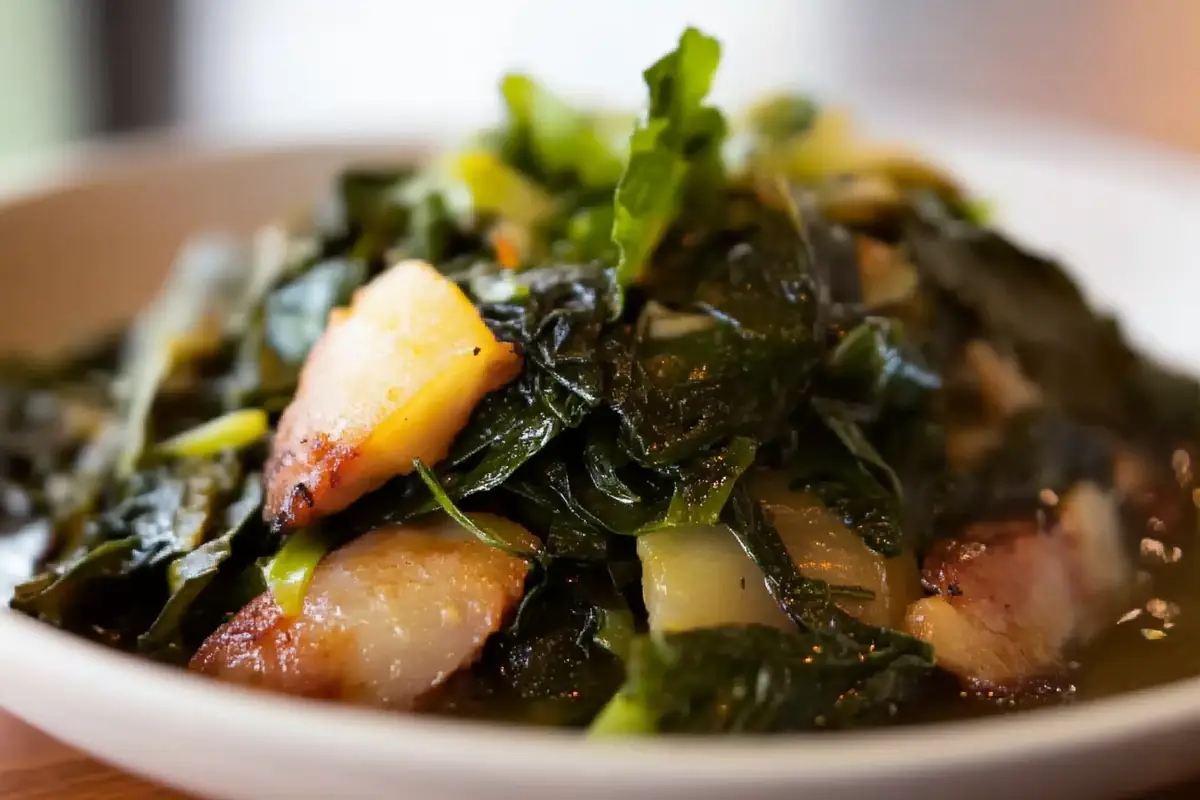Greens recipe not collards offers a world of delicious and healthy possibilities beyond the familiar collard. Many are looking for different options. These alternatives can bring a variety of flavors and textures to your plate. We will explore several amazing options.
Delicious Greens Beyond Collards
There are many reasons why you might seek a greens recipe not collards. Perhaps you simply want to try something new. Maybe collards aren’t your favorite, or you have an abundance of other greens. Whatever your reason, exploring different greens is worthwhile. Each variety possesses its own unique characteristics and flavors. Therefore, they will enhance your meals differently.
Spinach: A Versatile Leaf
Spinach is one of the most popular leafy greens. It is readily available and very easy to prepare. It offers a mild, slightly sweet flavor. This means it can be added to countless dishes. It works wonderfully in salads. It is also fantastic in cooked preparations. You can sauté, steam, or even puree spinach into sauces. Furthermore, it’s packed with vitamins and nutrients.
Image Placeholder: alt text includes “spinach recipe not collards”
Kale: The Mighty Green
Kale is another excellent choice for a greens recipe not collards. It is known for its robust, slightly earthy flavor. Some find it a bit bitter. However, proper preparation can mellow this out considerably. Kale stands up well to cooking. Thus, it’s great for soups, stews, or stir-fries. You can also massage raw kale with dressing for salads. This helps to tenderize it.
Swiss Chard: Colorful and Nutritious
Swiss chard is a vibrant, beautiful green. It also is highly nutritious. Its leaves are often a deep green. The stems can be red, yellow, or white. This adds visual appeal to your dishes. Swiss chard has a mild, earthy taste, similar to spinach. Therefore, it is great for sautéing, steaming, or using in casseroles. Its slightly thicker leaves provide a more substantial texture.
Mustard Greens: A Peppery Kick
If you want a greens recipe not collards with a bit of spice, choose mustard greens. Their peppery flavor is quite distinctive. Some describe it as similar to horseradish. Mustard greens are commonly used in Southern cuisine. They can also add zest to Asian-inspired dishes. Cook them quickly. This helps to preserve their bright flavor. Consider braising them for a more mellow taste.
Turnip Greens: Earthy and Mild
Turnip greens offer an earthy, slightly bitter flavor. It is quite mild compared to mustard greens. They are often sold along with turnips. They can be cooked together. However, you can cook them separately. They are traditionally used in Southern cooking. They are delicious when sautéed, steamed, or braised. They have a soft texture when cooked. They are an excellent source of vitamins.
Image Placeholder: alt text includes “turnip greens recipe not collards”
Beet Greens: Sweet and Savory
Beet greens are often overlooked. However, they are quite delicious and nutritious. They have a slightly sweet and earthy flavor. It is similar to beets, themselves. They are tender when young. They can be used in salads. Older beet greens benefit from a quick sauté. They taste great with garlic and olive oil. Don’t discard them next time you buy beets!
Bok Choy: Mild and Crunchy
Bok choy, also called Chinese cabbage, is a mild-flavored green. It has a crisp, crunchy texture. It is a versatile addition to any meal. The tender leaves are delicious raw in salads. The stems are wonderful when stir-fried. It is commonly used in Asian cooking. It complements both sweet and savory dishes.
Greens Recipe Not Collards: Preparation Tips
Preparing any greens recipe not collards requires similar techniques. Washing is key. Rinse greens thoroughly under cold running water. This will remove any dirt or sand. You may need to soak them for a few minutes if they are very gritty. Remove thick stems, as they can be fibrous. These are often tougher and will take longer to cook.
Sautéing Your Greens
Sautéing is a quick and simple way to cook most greens. Heat olive oil or butter in a large skillet. Add minced garlic for extra flavor, if desired. Toss your greens into the pan and cook them. Stir regularly until they wilt and become tender. This typically takes only a few minutes. Season with salt, pepper, and a touch of red pepper flakes if you like.
Steaming Your Greens
Steaming is a gentler method of cooking greens. It helps to retain their nutrients and color. You can use a steamer basket or pot. Place the greens inside, add a small amount of water to the bottom of the pot. Then, cover and steam. Steam until the greens are tender, but still slightly bright green. This often takes less than 10 minutes, depending on your green choice.
Braising Your Greens
Braising is a slower cooking method. It is best for tougher greens. It can tenderize them beautifully. Place the greens in a pot with liquid. This could be broth, water, or even wine. Add seasonings like garlic, onion, and herbs. Cover the pot and let it simmer until the greens are soft. This can take from 20 minutes to over an hour. The longer braising time will deepen the flavor.
Image Placeholder: alt text includes “braising greens recipe not collards”
The Amazing Flavor of Different Greens
The flavor of each green is unique and interesting. The subtle differences make it fun to experiment. Taste your greens. Observe their flavor and texture. This can help you to determine which best suits a particular dish. Don’t be afraid to combine several types of greens together. This can bring even more depth to your food.
Understanding Bitterness
Some greens are naturally more bitter than others. Factors like age and growing conditions can increase this. If you dislike the bitter taste, you can reduce it by blanching them before cooking. Blanching involves briefly immersing greens in boiling water. Then, you will move them to ice water. This helps to soften them and reduces their bitterness. Another method is to add a touch of acid like lemon juice or vinegar.
Sweetening Your Greens
You can also add some sweetness to your dish. This will balance the flavors. A touch of maple syrup, honey, or a few dried cranberries can work wonders. This approach is particularly helpful for stronger-flavored greens like kale. It is also beneficial with mustard greens. These additions will make them more palatable to people who dislike bitterness.
Seasoning is Key
Seasoning is crucial for any greens recipe not collards. Simple salt and pepper will always enhance the flavor. Don’t be afraid to experiment with spices. Try garlic powder, onion powder, paprika, or cumin. Herbs such as thyme, rosemary, and oregano add depth. A splash of lemon juice or a dash of hot sauce can elevate your greens, as well.
Image Placeholder: alt text includes “seasoned greens recipe not collards”
Greens Recipe Not Collards: Creative Combinations
The beauty of using various greens is that you can use them in so many ways. Try combining several greens together. For example, mix spinach and kale in a sauté. Create a hearty soup using beet greens and turnip greens. You could make a delicious stir fry with bok choy and mustard greens. The possibilities are endless!
Greens in Salads
Don’t think of greens only for cooked dishes. Many greens are fabulous in salads. Spinach, beet greens, and young kale are all great choices. Mix them with your favorite vegetables, nuts, and cheese. Drizzle a delicious dressing over the mix. You will have an incredibly healthy and tasty meal.
Greens in Smoothies
Adding greens to smoothies is an excellent way to increase your nutrient intake. Spinach and kale are popular smoothie additions. Their mild taste means you won’t notice their presence. Combine them with fruit, yogurt, or nut milk. This will result in a nutritious and refreshing beverage.
Greens in Side Dishes
Greens make amazing side dishes. Whether you sauté, steam, or braise them, they will add essential vitamins. Pair them with proteins, grains, or other vegetables. Greens add a wonderful element to any meal. Their versatility makes them an indispensable addition.
Greens Recipe Not Collards: Essential Health Benefits
Every green boasts impressive health benefits. They are all low in calories. They are also packed with vitamins and minerals. Greens provide Vitamin A, Vitamin C, and Vitamin K. They are also a great source of fiber. They also have important antioxidants. Incorporating these greens into your diet regularly is essential. This will contribute to your overall health and well-being.
Vitamin Powerhouses
Greens are packed with essential vitamins. Vitamin A is good for vision. Vitamin C supports immune health. Vitamin K is important for bone health. All these vitamins work synergistically. They maintain and support the body. Thus, greens are essential to a healthy diet.
Mineral Marvels
Leafy greens are rich in minerals like potassium, calcium, and iron. Potassium helps to regulate blood pressure. Calcium is important for bone strength. Iron is essential for healthy blood. These minerals support vital bodily functions. Therefore, eating greens will keep you healthy.
Antioxidant Rich
Greens are a very good source of antioxidants. These compounds can help protect cells from damage. They also combat chronic diseases. Eating greens can provide a natural way to maintain health.
FAQ
What can I use instead of collards?
You can use many greens instead of collards. Spinach, kale, Swiss chard, mustard greens, turnip greens, beet greens, and bok choy are great choices. Each offers unique flavors and textures. They work well in various recipes. Therefore, consider these options for a healthier, more diverse meal.
What are the different types of greens to cook?
Many types of greens can be cooked. Spinach and kale are very popular. Others include Swiss chard, mustard greens, turnip greens, beet greens, and bok choy. Each green has its own flavor. They all respond differently to various cooking methods. Therefore, try multiple types and see what you prefer.
How to get the bitterness out of greens?
There are several ways to reduce the bitterness in greens. Blanching them briefly in boiling water then moving to ice is a method. Adding a touch of acid like lemon juice or vinegar will also help. Also, consider adding sweet elements like maple syrup or honey. These approaches balance the flavors well.
Which greens taste the best?
Taste preference is very subjective. However, some greens are generally more popular. Spinach has a mild, slightly sweet flavor. Kale is earthy and robust. Mustard greens are more peppery. Experiment with a variety of greens. This helps to discover the flavor that you enjoy the most.

